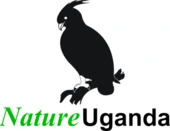The rediscovery of the Fox’s Weaver; Uganda’s endemic bird

Last documented in 1996 with more than 40 individuals breeding on the fringes of Lake Bisina, the Fox’s Weaver was not recorded again until in the recent two years when the bird was rediscovered breeding at a different site but in the same catchment of Lakes Bisina-Opeta. This weaver species is restricted to the north-eastern parts of Uganda. An excursion in August 2019, discovered new pockets of breeding colonies in new areas where the species was not known before in the seasonally flooded planes of that region.
Uganda is the birder’s paradise, boasting over 1,060 bird species and is arguably one of the top birding destinations in the World. Among the special birds for Uganda is the Fox’s weaver which is only found in Uganda and nowhere else in the world. The species is poorly studied and has only been recorded in the seasonally flooded wetlands in Teso Sub-region in the North-Eastern part of the Country. Previous records were from L.Opeta, L.Kyoga and L.Bisina fringes , where the species preferred Papyrus swamps with nearby trees, but nesting on trees in wetlands or over water.
The species mainly breeds during the main rainy season and was suspected to move further North to South Sudan during the dry season.
The population of the species is unknown. The first documented discovery of the species was in July 2018 when the Nature Uganda team made a reconnaissance to the freshly discovered sites of the species. This was followed by a more intense survey in the area in August 2019 covering four districts and extensive habitats where most of the records of the species were on nests, indicating the peak of the breeding season. Apart from the breeding season that is known to occur between May and August, the ecology and behavior of the species has not been well studied and documented. The species is Globally and regionally Near Threatened but locally considered to be Endangered (WCS, 2016).
Nature Uganda is leading the way in bridging the information and knowledge gap with regard to the ecology and behavior of the species. Working with partners such as African Bird Club (ABC), Uganda Bird Guides Club (UBGC) and Local bird guides, NU has carried out a total of three excursions, to locate and estimate the population of the species, map its distribution and document the habitat of the bird especially its breeding ecology.
The August 2019 the Fox’s Weaver Survey was conducted by a team comprised of four goups. The team was made up of members from Nature Uganda staff and volunteers from UBGC.
The survey was timed to coincide with the known peak of the breeding season of the bird. Majority of the sites surveyed were found in Katakwi District and Kapelebyong , which were surveyed by two groups; the “Magoro team” based in Magoro, and the“Katakwi team”. The other teams included the “Kumi team” which surveyed Kumi and Soroti districts, while the “Iriri team” surveyed sites in Iriri, Napak district.
Through the dedicated effort of all teams, the Fox’s Weaver was recorded in Magoro, Palam, Ngarium in katakwi Districts, Ogongoja in Kapelebyong District and Iriri in Napak District. Previously another colony was recorded in Pian Upe in Nakapiripit District. No records were made in the visited sites in Kumi and Sororti Districts despite of previous reported observation at the Awoja bridge in Soroti District.
In all observation except Iriri sites, the bird was recorded breeding. Findings from the survey showed that, the Fox’s Weaver inhabits mainly seasonally flooded grasslands dominated by Vachelia drepanolobium commonly known as the Whistling-thorn Acacia.
However, the breeding colony in Palam was away from the wet places but close to the stagnant pools of water on the roadsides. This acacia species was the favored nesting tree for the Fox’s Weaver. Magoro and Ngarium had the highest number of observed individuals.
In all cases of the breeding records, the nesting trees were within the vicinity of a road and it was not uncommon to see birds flying across the road or perched just a few meters off the road in this area. Findings from the survey are an important step forward unraveling the mystery of Uganda’s only endemic bird species.
However, more studies will be required in the near future to understand the bird’s distribution and ecology so as to mitigate threats to its habitat and develop species conservation measures to ensure the survival of its population in Uganda.
Related Posts
Recent Posts
Forests and wetlands degradation and it’s impacts on herpetofauna and other wildlife
Embracing Regenerative Tourism as the next step in Sustainable Tourism
Engaging Site-based Communities in Research and Conservation: The Locally-based Monitoring Initiative
All Categories
- Conservation and Development (27)
- Eco-tourism (3)
- Education and Awareness (10)
- Forests (7)
- Habitats (9)
- Nature walk (2)
- People (5)
- Projects (9)
- Public dialogue (6)
- Research and Monitoring (18)
- Sites (4)
- Species (10)
- Wetlands (12)
- Wildlife (6)




